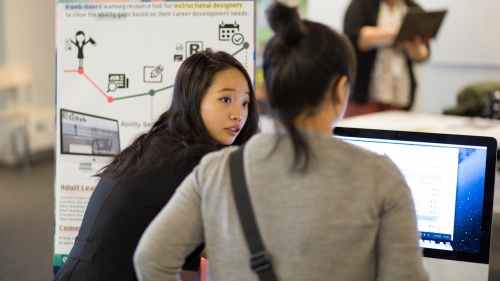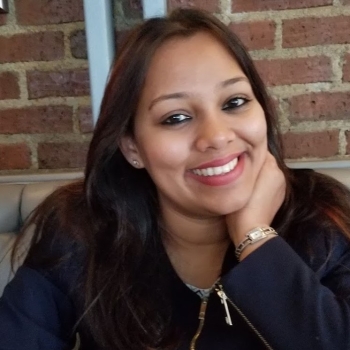

Shilpa Sahay is an Adjunct Professor and an Associate Research Scientist at New York University. She has a PhD in Educational Technology from the University of Florida, an MA in International Education from New York University, and, an MA in Social Work, and a BA in Political Science from the University of Delhi.
Shilpa has over a decade of work and research experience in the field of education, technology training, and community development. She conducts surveys and qualitative research on teaching and learning environments that support hands-on STEM inquiry-based integration. Her current work explores recording reflections of teachers teaching science units and their media usage for elementary-aged kids in New York City schools.
She has previously worked with multinational organizations and non-profits, namely, UN, Room to Read, GeSCI, CSDMS, and Mobile Creches. She has taught graduate and undergraduate-level courses at NYU and UF and thoroughly enjoys working with students on exploring the potentialities of technology integration in teaching and learning.
She wants to explore the potentialities of distance digital learning narrowing the traditional North-South global divide and invites collaboration on educational projects leading to opportunities and upliftment of marginalized communities.
Selected Publications
• Sahay, S. & Bouwmeester, M. (2021). Elementary Educators Reflections on Challenges and Opportunities of Implementing Hands-on STEM Remote Learning During Covid- 19. In American Educational Research Association (AERA).
• Sahay, S. & Bouwmeester, M. (2021). A Classroom Case Study Reflecting on Educators Perspectives on Science Unit Delivery in an NYC Elementary School during Covid-19. In Society for Information Technology & Teacher Education (SITE) International Conference.
• Sahay, S. (2020). Recommendations to Policy Makers, Schools, Teachers, and Researchers on Teachers’ Use of ICT in Schools in Delhi, India. In Society for Information Technology & Teacher Education International Conference (pp. 2138-2142). Association for the Advancement of Computing in Education (AACE).
• Sahay, S. (2019). The status of technology integration by teachers in the United States and India: A cross-cultural comparison. In Global Learn International Conference. Association for the Advancement of Computing in Education.
• Sahay, S. & Dawson, K. (2019). Investigate teachers’ perspectives toward technology integration in teaching in Delhi, India. In Society for Information Technology & Teacher Education International Conference. Association for the Advancement of Computing in Education.
• Sahay, S. (2016). Trend Analysis of Technology Integration by Teachers in India. In Society for Information Technology & Teacher Education International Conference (pp. 2317-2321). Assoc. for the Advancement of Computing in Education (AACE).
• Dawson, K., Antonenko, P. P., Sahay, S., & Lombardino, L. (2016). How mobile app developers conceive of dyslexia and what it means for mobile app users. Interaction Design and Architectures, (28), 69-84.
• Antonenko, P. D., Dawson, K., & Sahay, S. (2016). A framework for aligning needs, abilities, and affordances to inform design and practice of educational technologies. British Journal of Educational Technology, 48(4), 916-927.
• Wilson, M., Sahay, S., & Calhoun, C. (2014). ADDIE Explained: Evaluation. Online Chapter.
• Sahay, S. & Antonenko, P. (2014). Perceptions of the Role and Value of Interactive Videoconferencing and Chat Rooms in Supporting Goals of Cross-Cultural Understanding among Three Educational Nonprofit Organization. Annual Proceedings of Selected Research and Development Papers Presented at the Annual Convention of the Association for Educational Communications and Technology (37th, Jacksonville, Florida, 2014). Volume 1. Association for Educational Communications and Technology.
